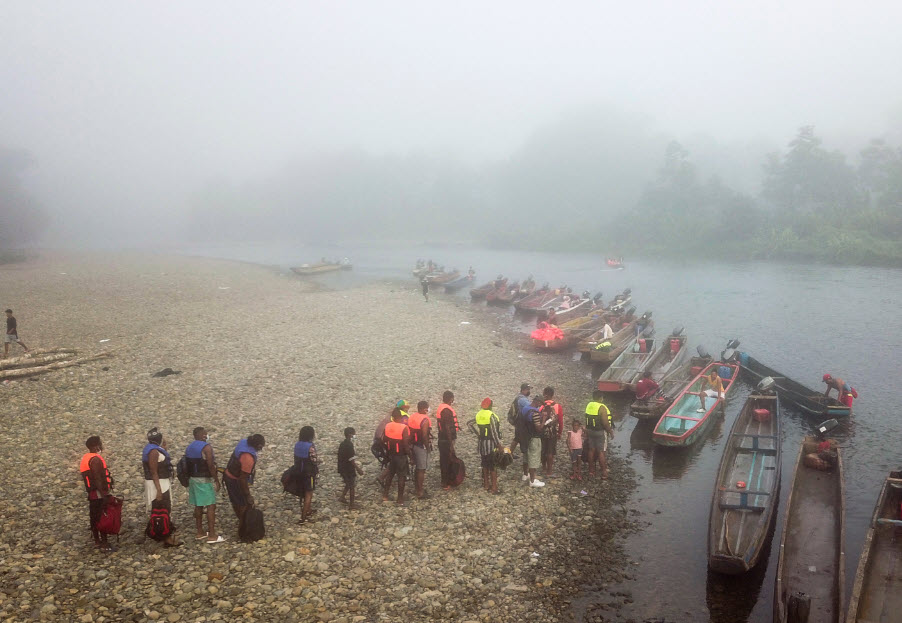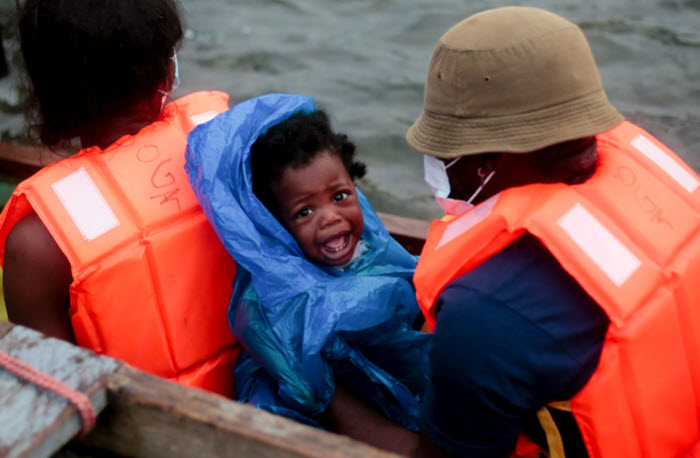So far in 2021, 64,000 migrants have crossed Darien Gap, a vast jungle and one of the world’s most dangerous routes.
When Moise Cliff Raymond arrives at the Turquesa River, he plunges in to wash off the filth from trekking five days through the perilous Darien Gap jungle in order to cross the Colombian border into Panama.
The Haitian and his companions, who have just arrived at Bajo Chiquito – the first community on the Panama side – are covered in mud after the previous night’s heavy rain.
“The journey was very hard because it’s a long walk,” said the 29-year-old. “There are many dead, people who didn’t make it this far.”
While Raymond walked, other migrants who had spare cash or children chose to hire a canoe taxi to take them to the village’s small port.
Another Haitian, Peter, struggled into one of the canoes while holding onto his three-year-old daughter.
“This is how things are. You have to do it if you want a new life. Things are very difficult for us Haitians,” said the 29-year-old, who did not give his last name.
So far in 2021, 64,000 migrants have crossed the Darien Gap, a 575,000-hectare (1,430,000-acre) jungle which the UN’s children agency, UNICEF says is one of the world’s most dangerous routes, including 18,000 in August alone, according to Panama’s Security Minister Jean Pino.
Most of them are Haitians.
The jungle is infested with armed gangs and drug traffickers who often rob or attack the migrants crossing it.
In a bid to cope, Panamanian and Colombian authorities have agreed to allow the passage of 500 migrants a day.
They all arrive in Bajo Chiquito, a village that is home to members of the Embera Indigenous people.
“I am going to the United States. That’s my destiny, that’s where I’ll be able to accomplish my dreams, to get a good job,” said Raymond.
He still has a long way to go.
The number of children taken through the Darien Gap has multiplied 15-fold in four years, says UNICEF.
Many arrive in Panama dehydrated or with breathing difficulties due to exposure to rain and humidity, says Vasquez.
From Lajas Blancas, the migrants will travel by land to San Vicente where they have to pay $40 for a bus trip to the Costa Rican border.
From there, they still have to make it through Nicaragua, Honduras, Guatemala and Mexico before finally reaching the US border.
Migrants from Haiti and other countries arrive in Panamanian territory, after walking for five days through the Darien Gap. Migrants set off at 6am and walk for 12 hours a day, said Yadira Rosales, one of a small number of Cubans among the throngs.
Get Vaccinated and stay safe!!

